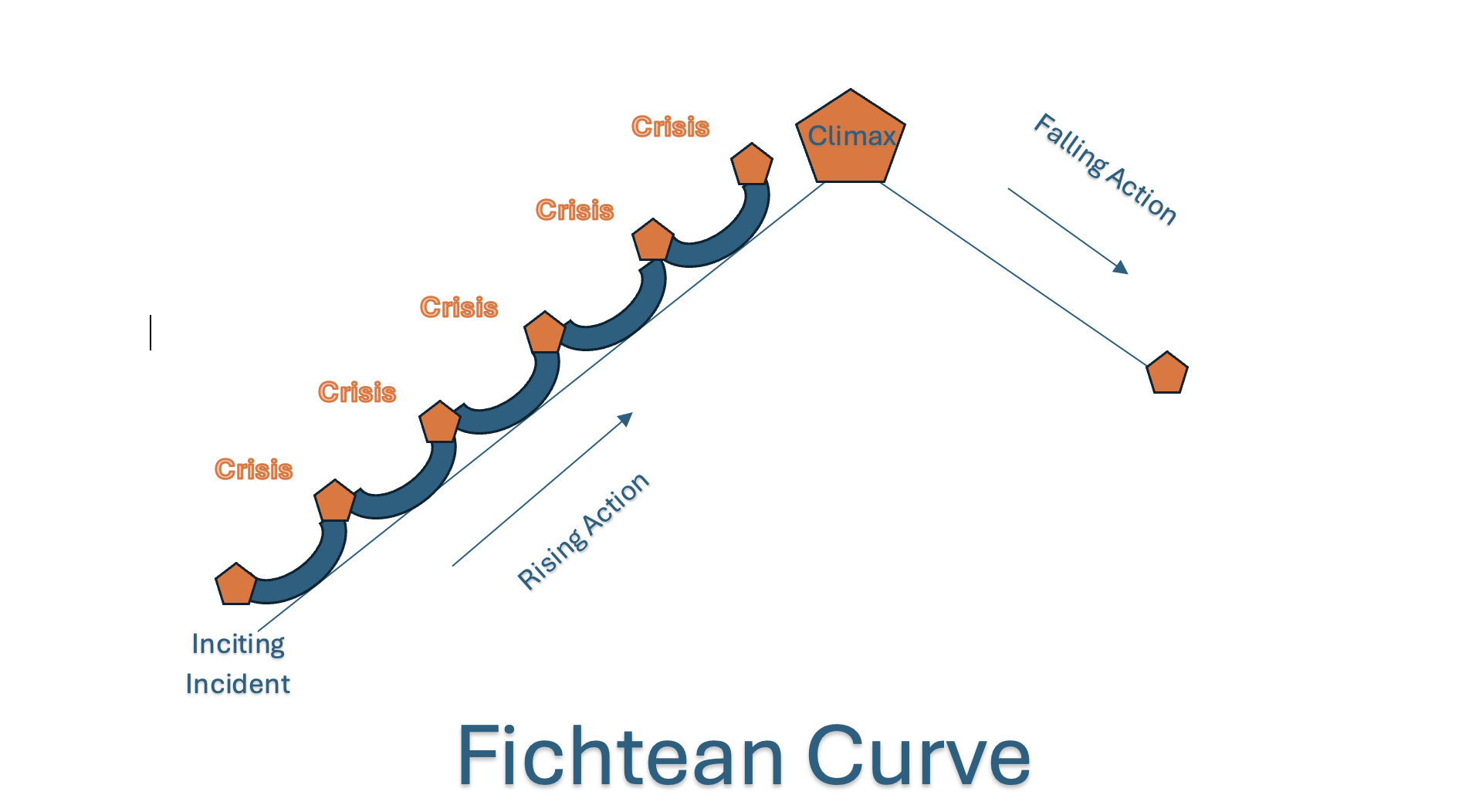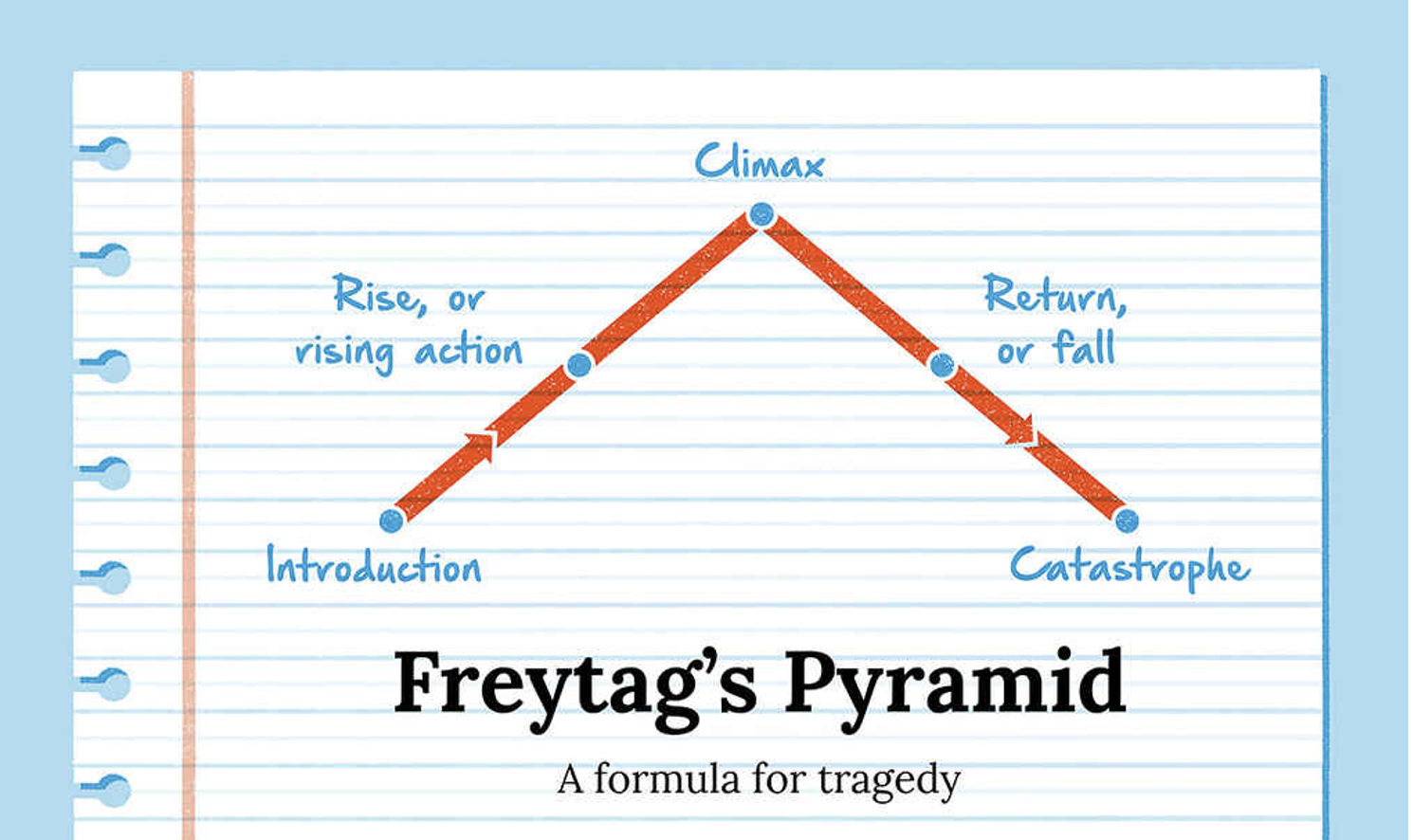Story Structure Series: The Three Act Story Structure
Pauline J. Grabia participates in the Amazon Services LLC Associates Program, an affiliate advertising program, and earns from qualifying purchases from links in this post.
Please subscribe to my email newsletter for updates on my website and blog and exclusive access to exclusive content on the Subscriber Content page of this website (see menu bar above). New content will be added regularly. You can sign up in the form found in the footer of this page. Thank you!
In previous posts, we have explored various forms of story structure, including Freytag’s Pyramid, the Fichtean Curve, and the Hero’s Journey. Each of these is an effective story structure for a writer, depending on the narrative. The Three-Act Story Structure is one of the most used story frameworks in literature and film. This structure divides the story into three main sections or acts: Act 1, the Setup (or Beginning); Act 2, the Confrontation (or Middle); and Act 3, the Resolution (or Ending). This will not be a comprehensive exploration of the three-act structure, as there are other blogs listed at the end that do a much better job than I could of deeply examining the elements of this structure.
Each of the three acts has subdivisions that correspond to major beats in the story’s plot. The three-act structure originates from Aristotle, who discusses story beats in his work, “Poetics.” According to him, stories consist of a series or chain of cause-and-effect events, each building on the last and increasing tension until the story reaches its climax and resolution.
One or more plot points in each act serve as anchors driving the overall action. The complete story unfolds throughout the three acts. What are the subdivisions or plot points of each act?
Act One, the Setup or the Beginning, usually starts with the exposition. This is where the world, setting, and characters are introduced and developed. The reader/viewer gains a picture of the protagonist’s “normal world” and what leads to the next plot point, the Inciting Incident or Event. The Inciting Incident is the event that disrupts the protagonist’s everyday world, creating a significant conflict for them, compelling them to take action. Following this, a central turning point, the 1st plot point, must occur to solidify the Inciting Incident further and push the protagonist to the point of no return. They must continue to confront the conflict. This plot point transitions the story from Act 1 to Act 2.
Act Two, the Confrontation or the Middle, consists of rising action, a series of events that build tension and develop conflict, leading to a midpoint. This critical event shifts the Protagonist’s perspective and the story's direction. Following this, there is a devolution to a crisis point, known as the 2nd Plot Point. At this stage, the Protagonist faces a significant setback or failure. The way the Protagonist recovers (or doesn’t) impacts the remainder of the story.
Finally, we have Act 3, the Resolution or the End. Three major plot points occur in this section. The first, the pre-climax, is where the tension builds to its highest point, causing the reader or viewer to anticipate the final confrontation between the Protagonist and the Antagonist, as well as the conclusion of the conflict. This occurs at the climax, which is the peak of the conflict and the moment when it is finally resolved, either in the Protagonist’s favor or not. The denouement, or the resolution of the climax, follows this, where the Protagonist faces the aftermath, and the story comes to a close.
I am especially fond of this story structure and use it in almost everything I write. I like the way K.M. Weiland presents it on her website, Helpingwritersbecomeauthors.com. She breaks this structure down into three-act timelines as follows:
Be sure to visit her website and explore the many books she has written on writing and story structure. She offers a treasure trove of helpful information from which I have benefited.
There are numerous examples of the Three-Act Story Structure in literature and film. Some examples from literature include:
1. To Kill a Mockingbird by Harper Lee
· Act 1: Scout’s world is established as well as the other characters including her brother Jem, neighbor Boo Radley, and father, Atticus Finch. The Inciting incident of Tom Robinson’s arrest and trial is introduced.
· Act 2: This act details the trials and tribulations of the characters and community during the trial period.
· Act 3: The reader witnesses the conclusion of the trial and its aftermath, including the attack on Scout and Jem and their subsequent rescue by Boo Radley.
2. Pride and Prejudice by Jane Austen
· Act 1: The characters and social setting of this period piece are established.
· Act 2: The reader encounters the escalating conflict between Elizabeth and Mr. Darcy.
· Act 3: The conflict is resolved with their marriage.
3. 1984 by George Orwell
· Act 1: The author sets up the dystopian world of Oceania and its protagonist, Winston Smith.
· Act 2: Depicts Winston’s struggles and rebellion against Big Brother.
· Act 3: The reader learns the consequences Winston faces for his choices and rebellion.
4. The Lord of the Rings by J.R.R. Tolkien
· Act 1: The world of Middle-earth and The Hobbit is developed, as is the character of Frodo, who inherits the One Ring at the center of the conflict.
· Act 2: The reader follows the Fellowship’s journey and the struggles against the Dark Lord.
· Act 3: The story's culmination, where the ring is destroyed and the conflict is resolved.
Some examples of the Three-Act Structure can be seen in the original Star Wars film, where creator George Lucas combined the Hero’s Journey and the Three-Act Structure. Likewise, the Three-Act Structure is used in the movie The Matrix.
The Three-Act Structure is my favorite structure to use because it is straightforward and logical, especially when writing stories that follow a chronological order. Before I used the Three-Act Structure, I couldn’t get the pacing right and often left out essential elements that readers expected. However, other structures are also helpful. In the next post in this series, we will explore Blake Snyder’s “Save The Cat” Beat Sheet.
Thank you so much for reading this post and visiting my blog. Please sign up for my newsletter to receive a monthly update about the website and blog, as well as exclusive access to the material on my Subscriber Content page at www.paulinejgrabia.com. I am honored that you have taken the time to read what I have to offer, and I will endeavor to continue posting blogs that are worthy of your continued attention. May God bless you richly.
Pauline J. Grabia





In previous posts, we have explored various forms of story structure, including Freytag’s Pyramid, the Fichtean Curve, and the Hero’s Journey. Each of these is an effective story structure for a writer, depending on the narrative. The Three-Act Story Structure is one of the most used story frameworks in literature and film. This structure divides the story into three main sections or acts: Act 1, the Setup (or Beginning); Act 2, the Confrontation (or Middle); and Act 3, the Resolution (or Ending). This will not be a comprehensive exploration of the three-act structure, as there are other blogs listed at the end that do a much better job than I could of deeply examining the elements of this structure.